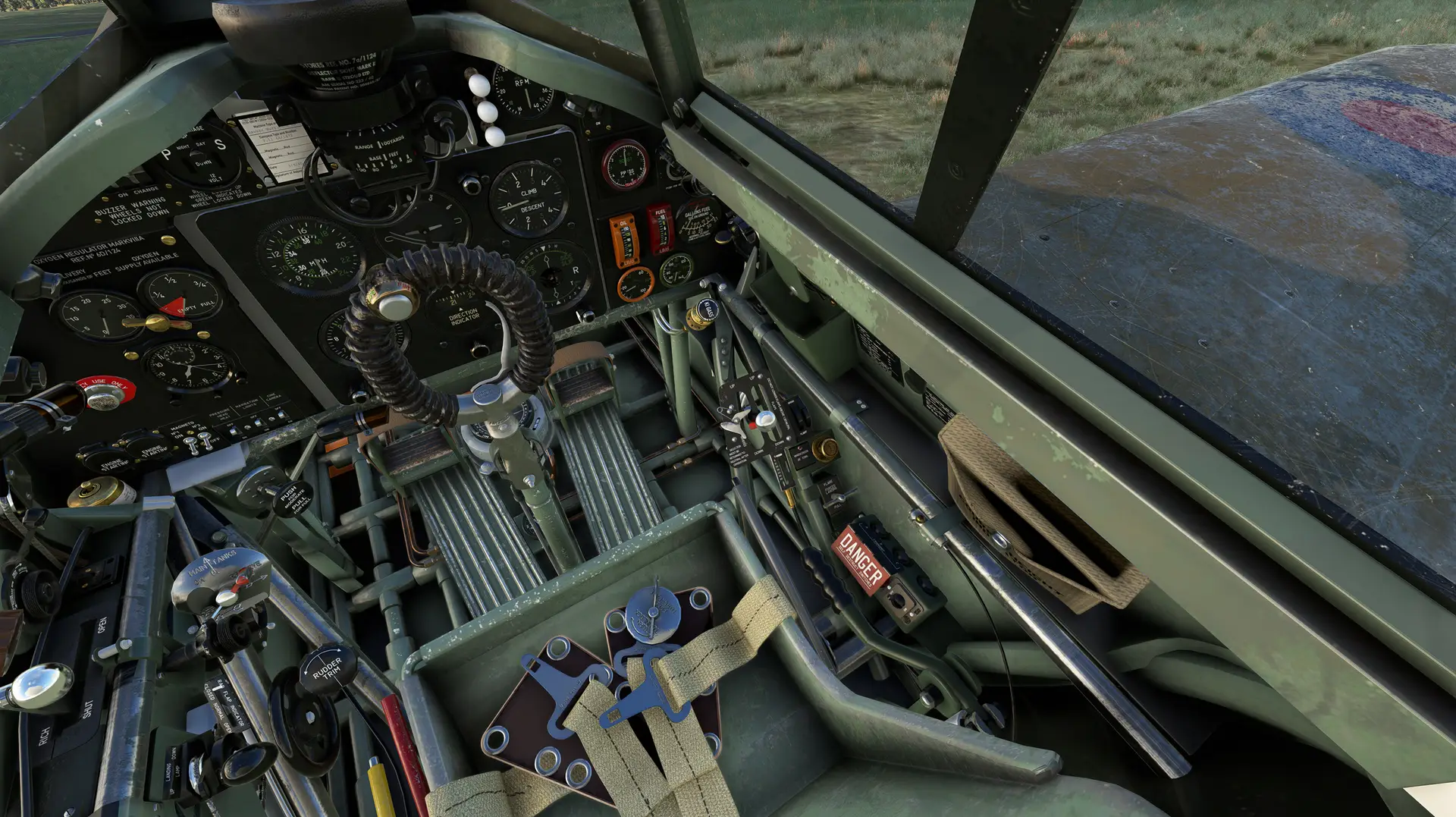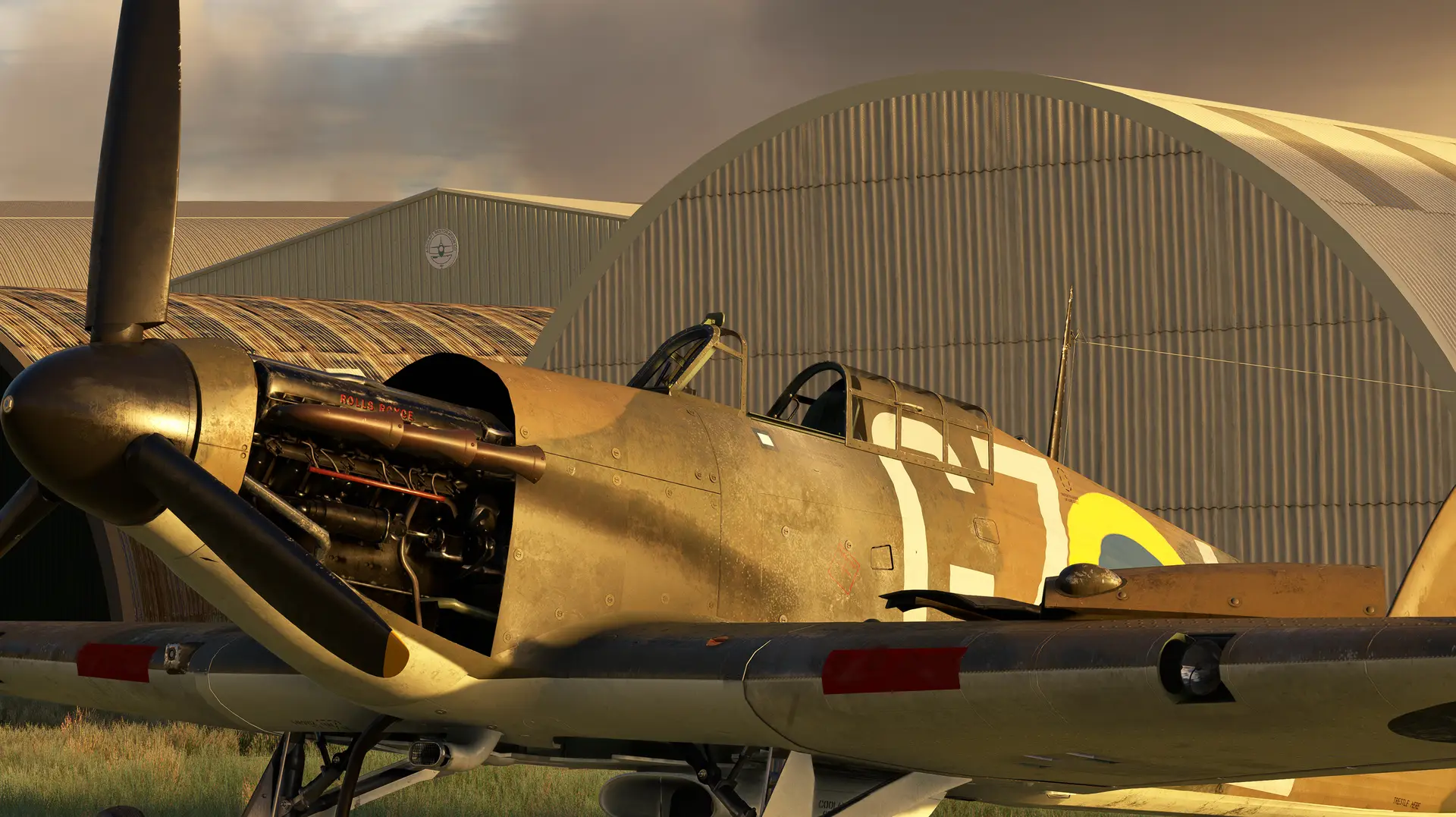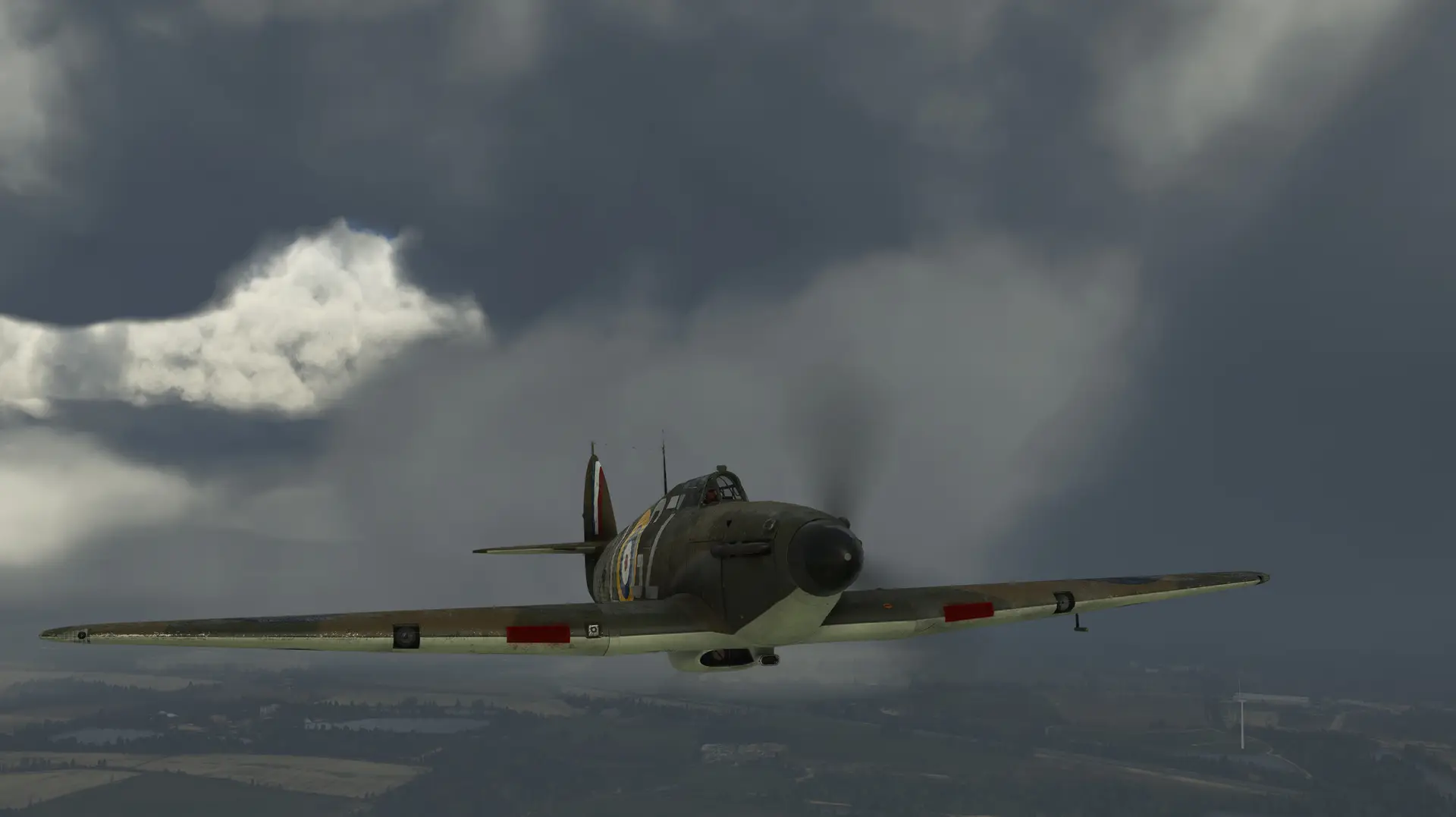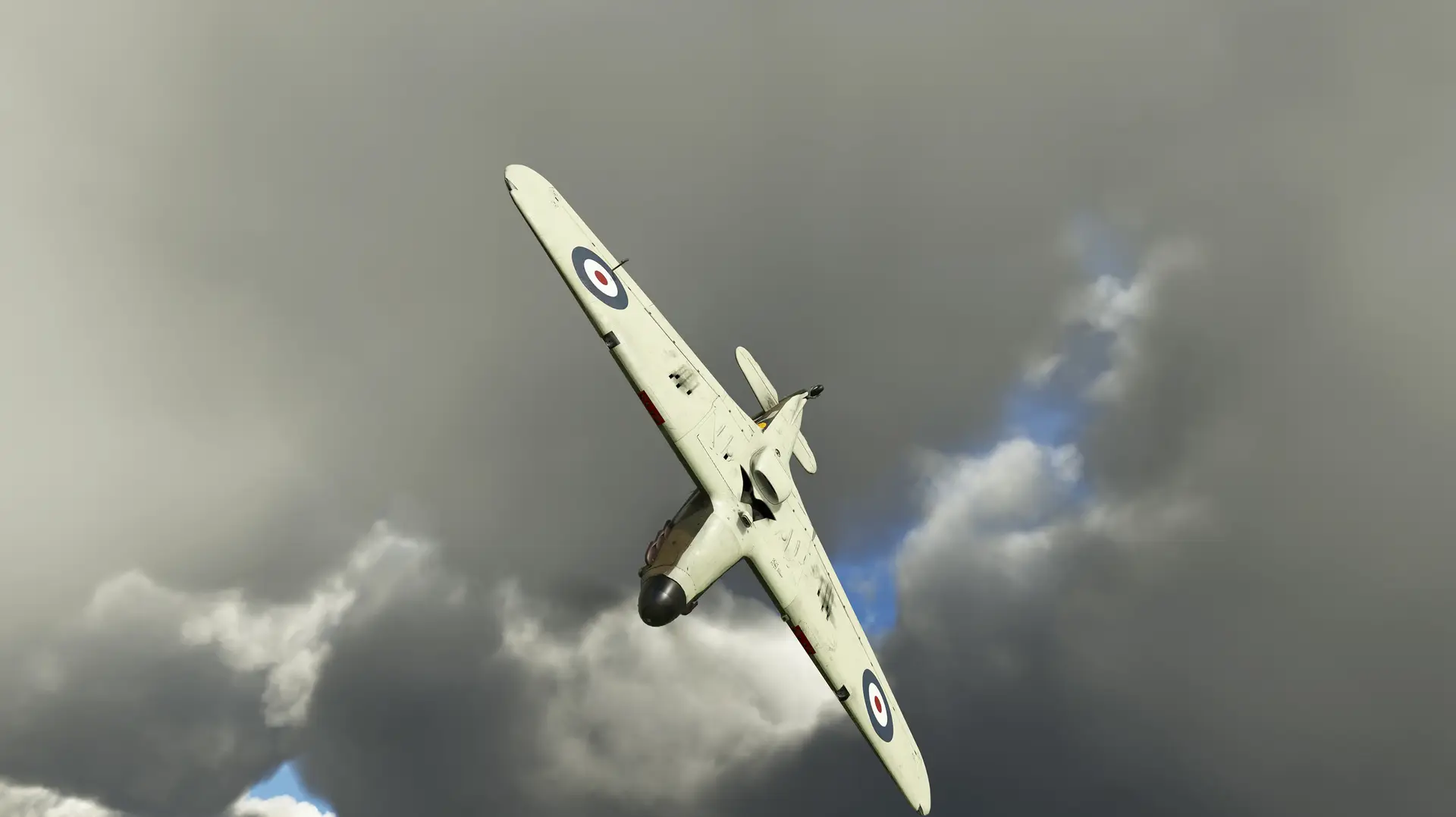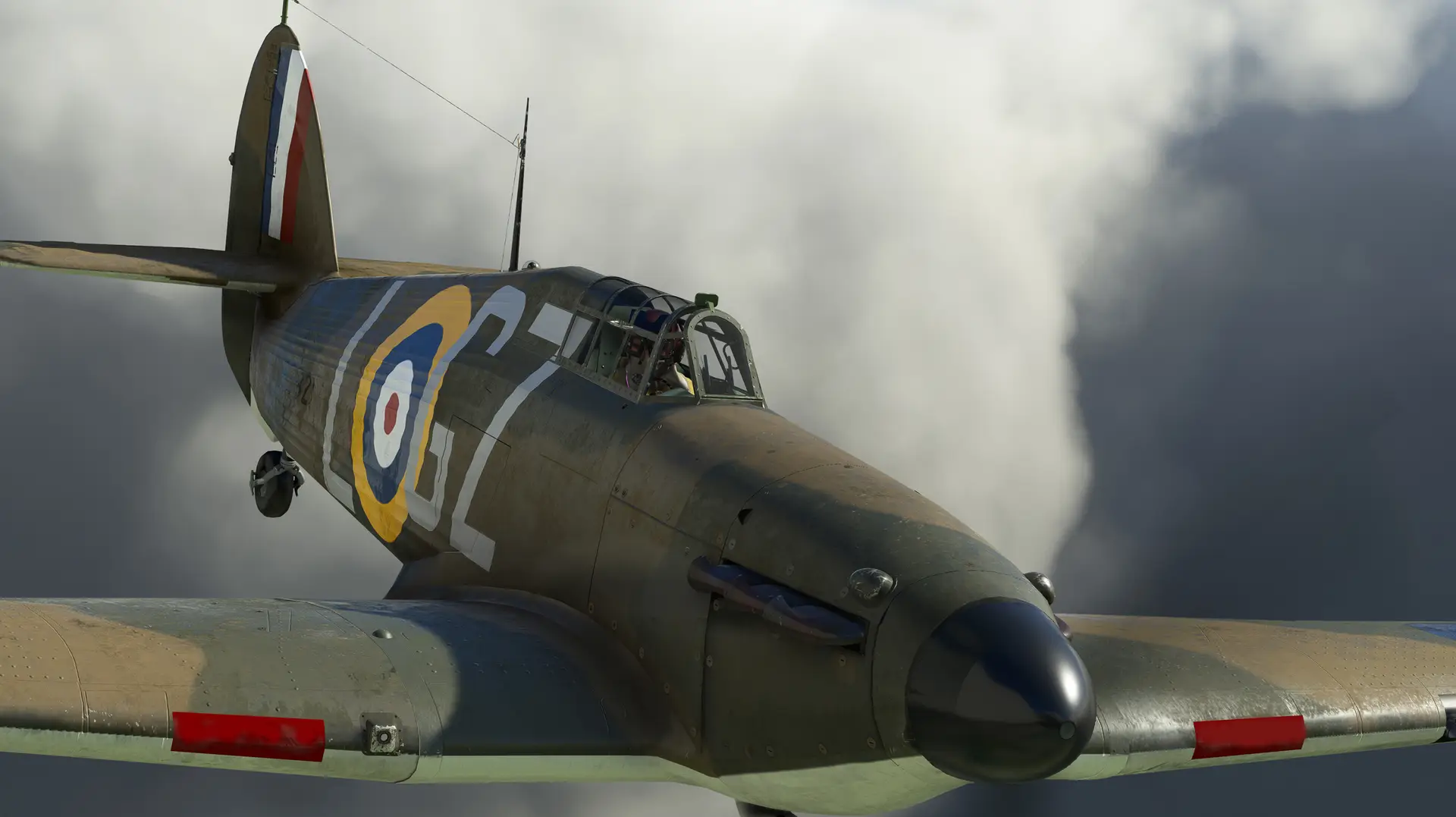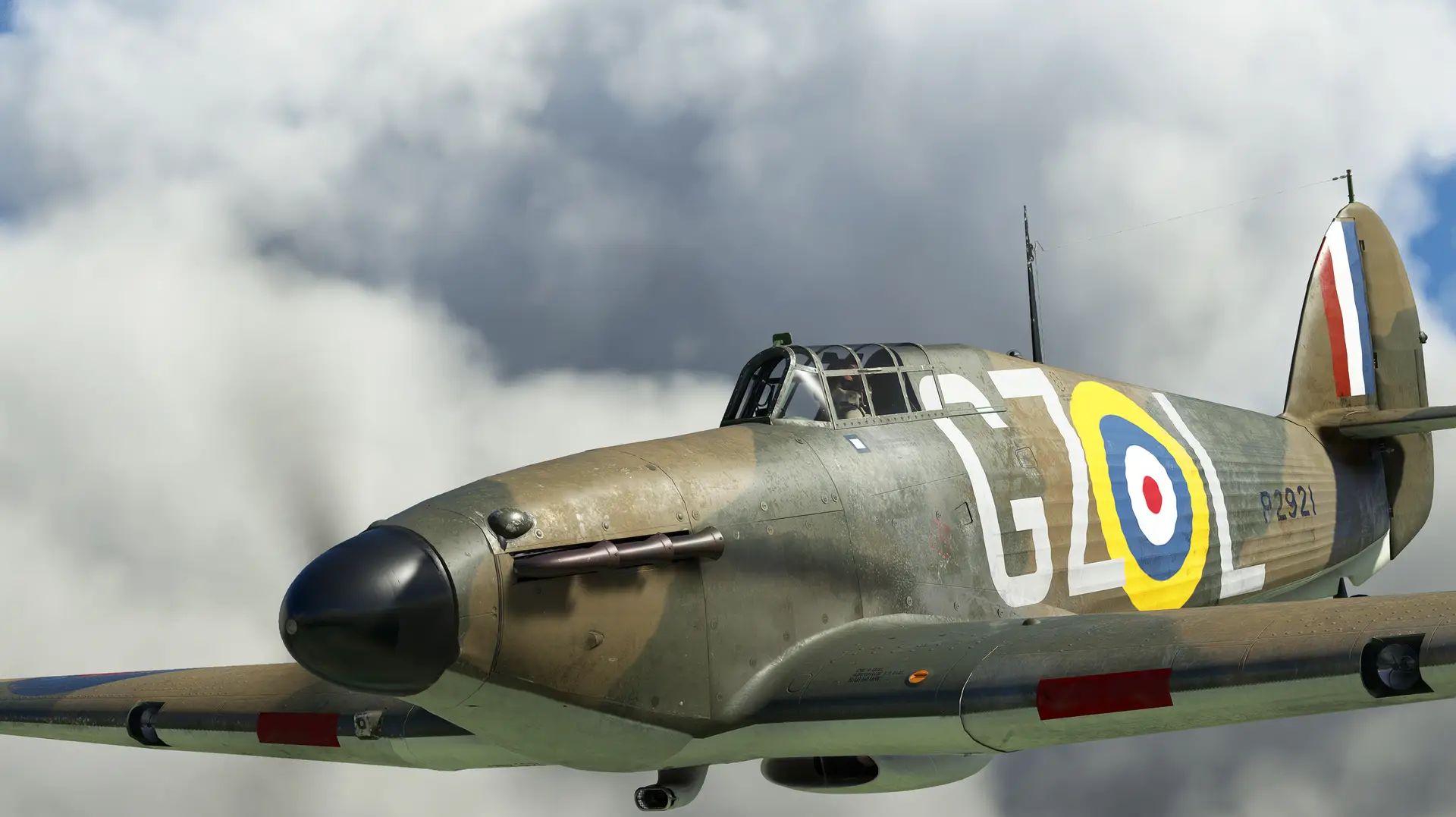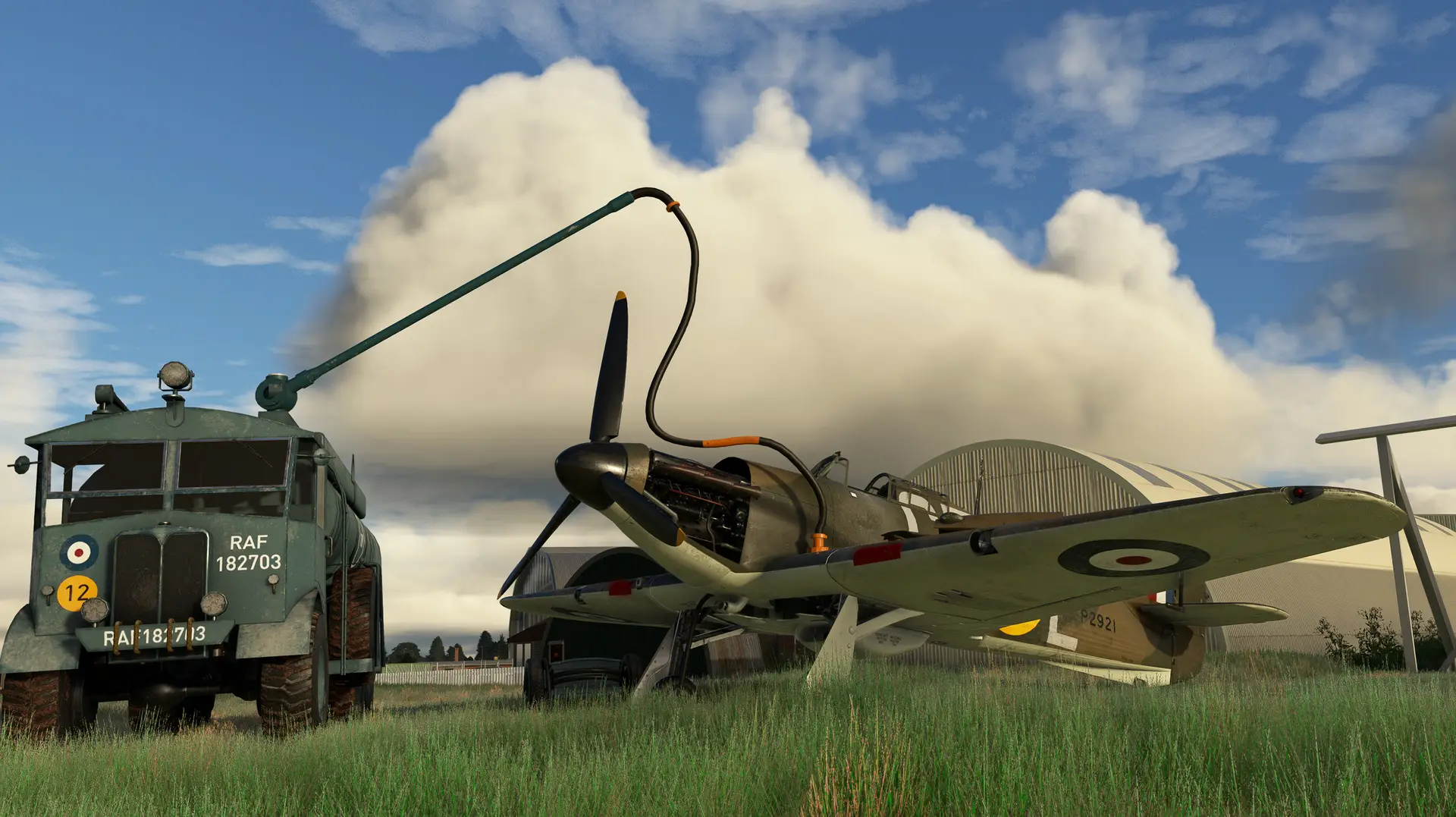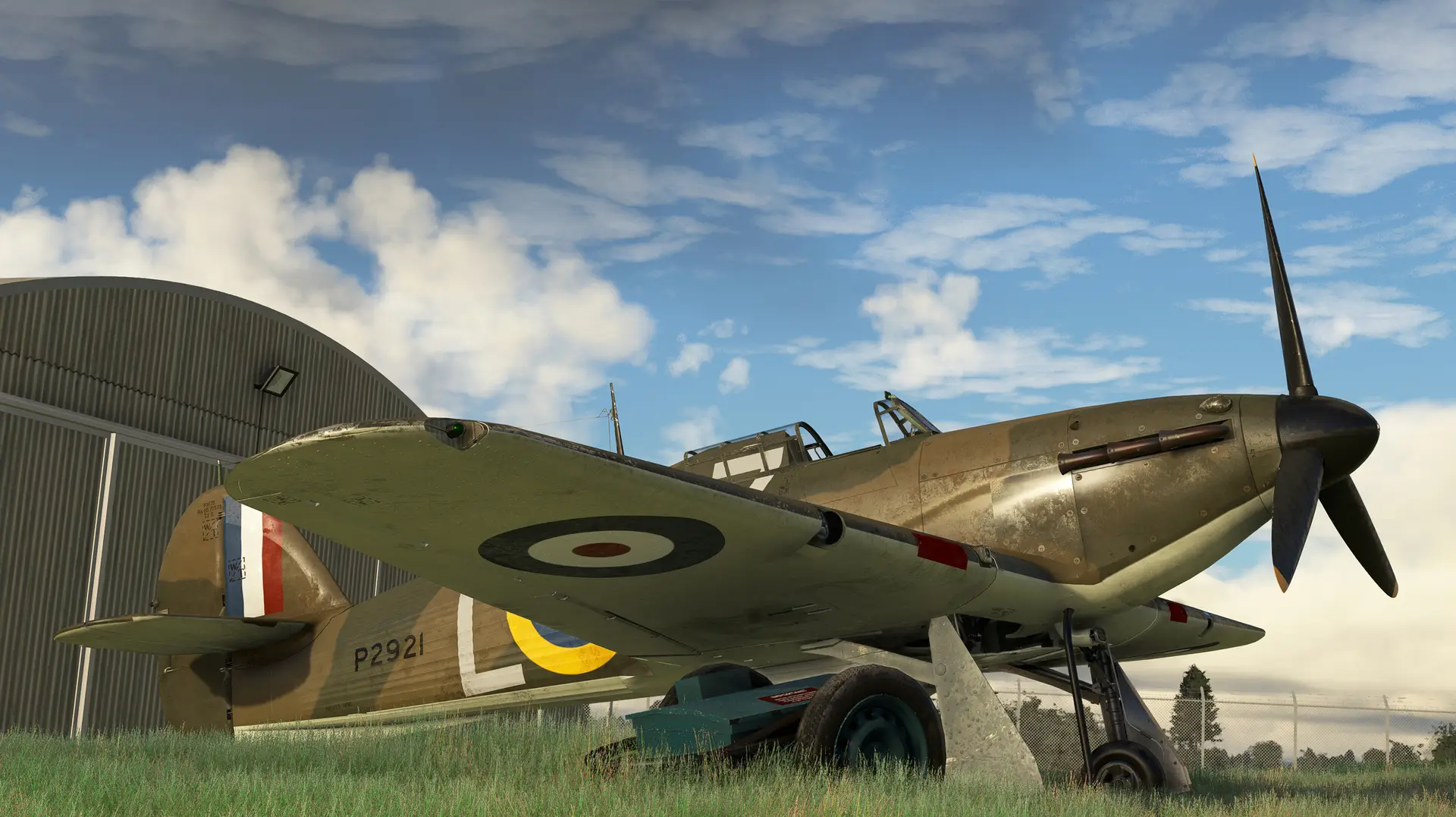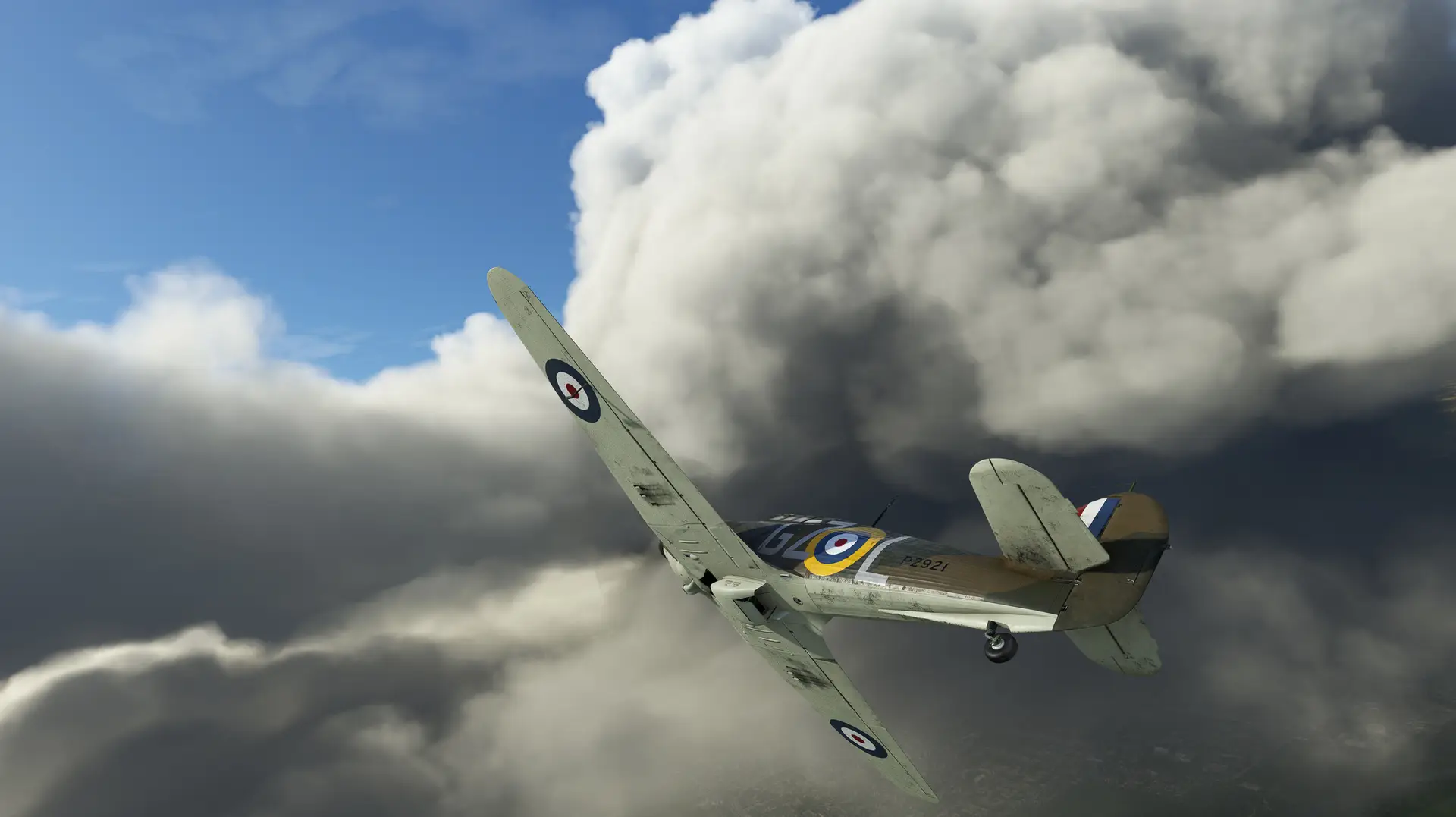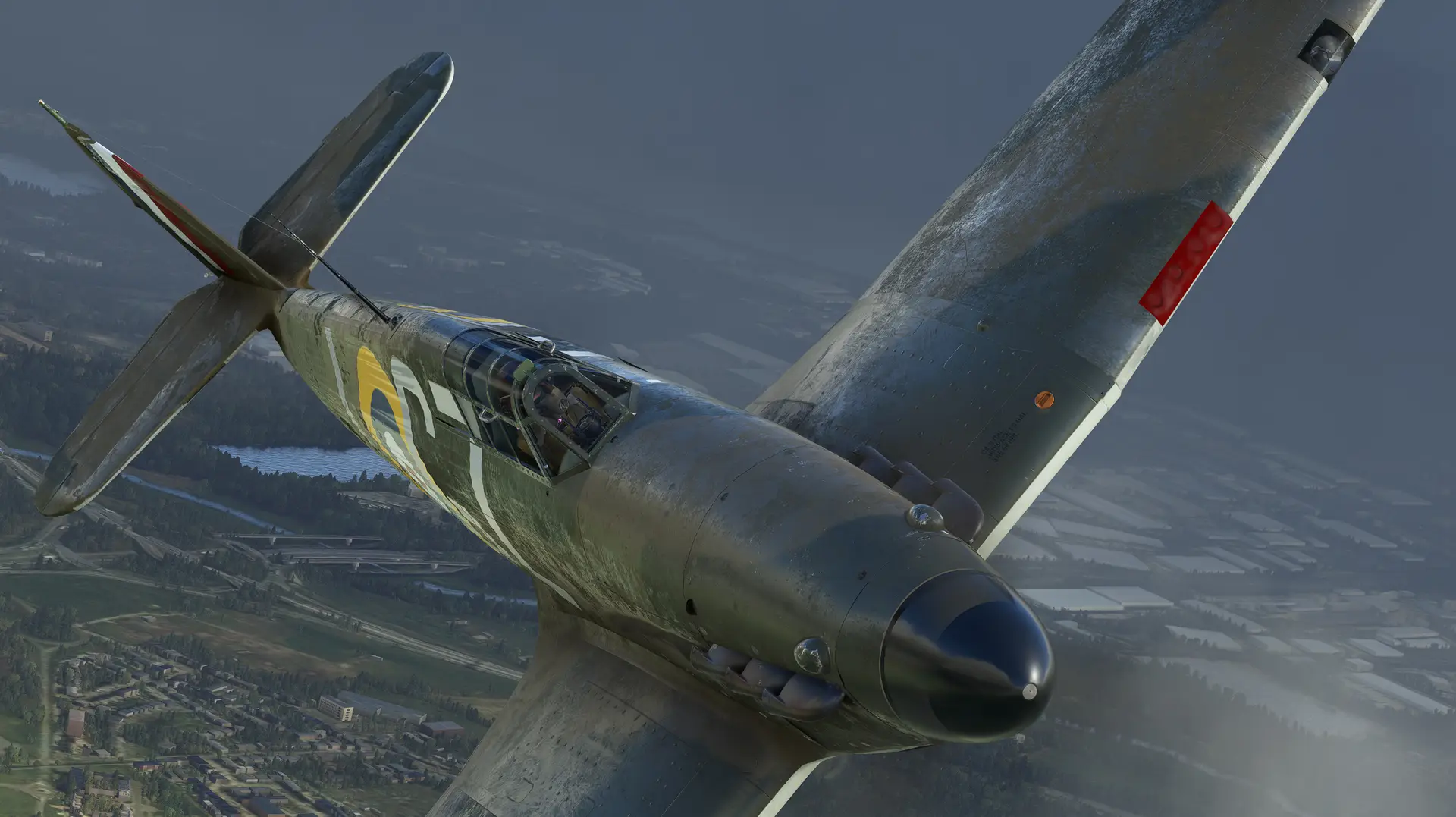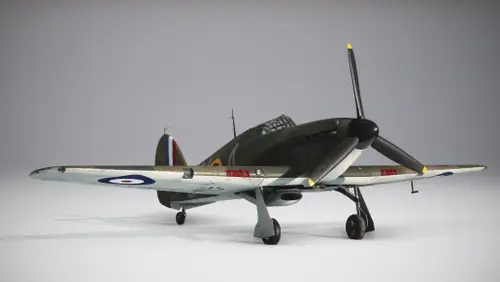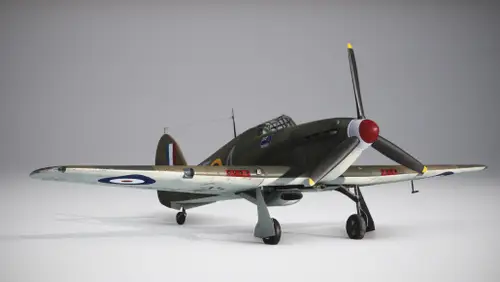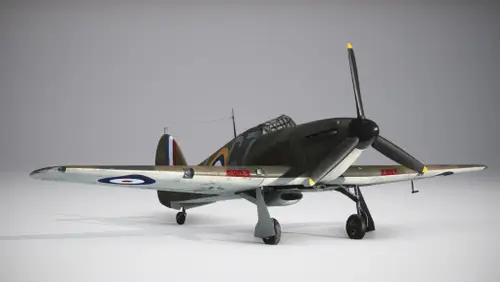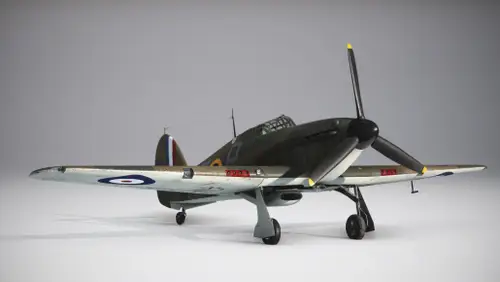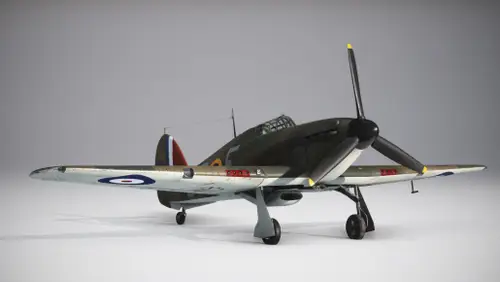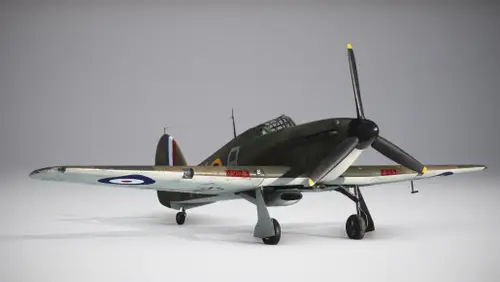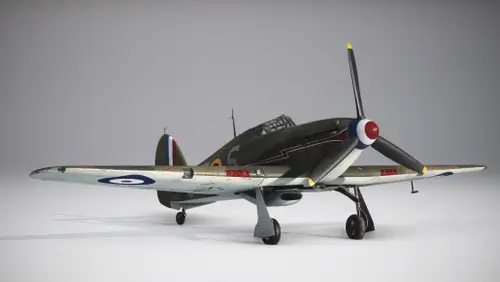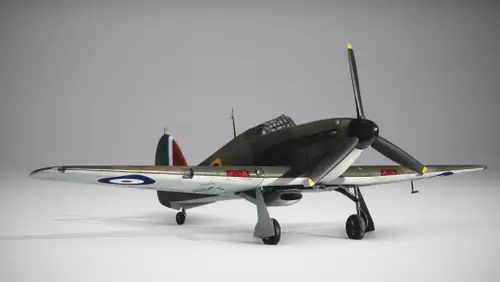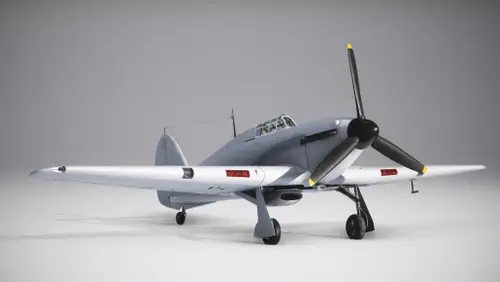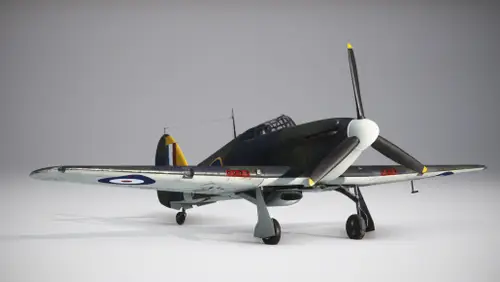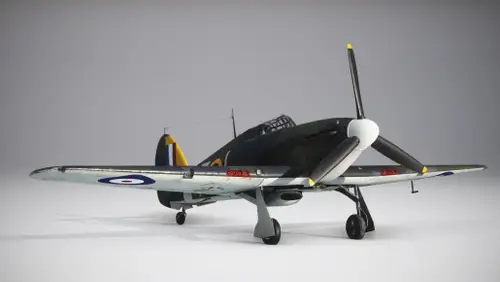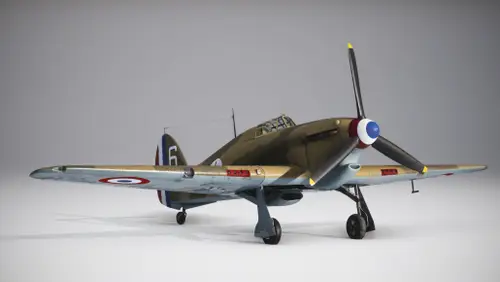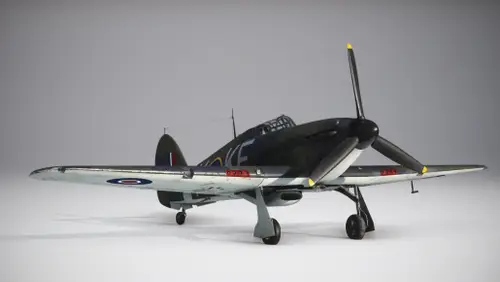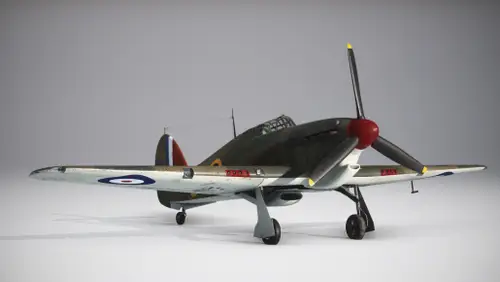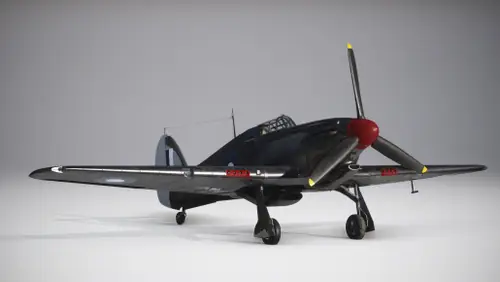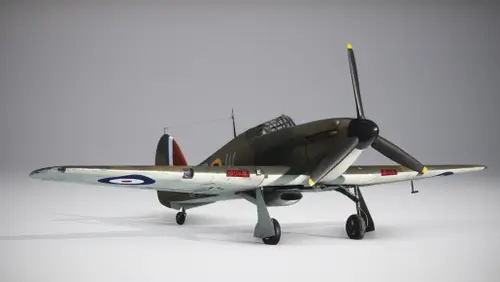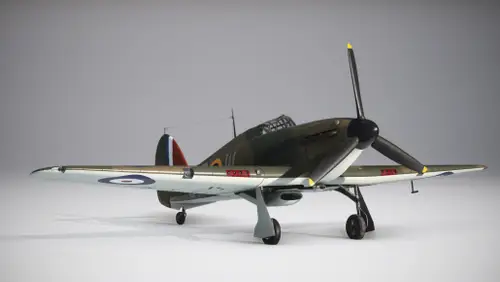- USD 28.99
- View more offers at FS Addon Compare
- Added: June 6, 2024
- Updated: August 8, 2024
In the mid 1930s, with clouds of war gathering, discussions between the Air Ministry and leading aircraft designers of the time, led to a new order being issued to replace the ageing biplane designs currently filling important front-line roles for the RAF. Sir Sydney Camm and Hawker were already prominent in the design and production of many of the RAF's front-line aircraft including the venerable Hawker Fury. Camm set about designing a monoplane derivative of the Fury, retaining much of the traditional wood and fabric construction techniques, especially for the aft fuselage. This would prove to be an excellent direction as the airframes would be familiar to field crews and those responsible for maintenance and repair, resulting in faster servicing and repair times - a critical factor in the months to come. The new design featured eight machine guns mounted in sturdy, extremely thick section wings. Early production machines were built with fabric covered wings but later (by the time of the Battle of Britain) these had changed to all-metal skinning. A wide track retractable undercarriage was fitted with a castoring non-retractable tail wheel. Power was delivered by Rolls Royce's new Merlin II V12 engine - the same power plant that would power the Spitfire and Lancaster bomber, DH Mosquito and many other successful designs throughout the war. This again, would streamline servicing and maintenance of the RAF's front-line fighting machines. The new Hurricane first took the air in November 1935 and entered squadron service on Christmas Day, 1937. As already noted, these early machines had fabric-covered wings and sported two-blade fixed-pitch Watts wooden propellers. By the time of the Battle of Britain in 1940, there was a choice of Rotol or DeHavilland three-blade variable pitch, constant speed propellers, choice depending on available supply. Largely unchanged in its entire career, the Hurricane was an effective day and night fighter, fighter-bomber and served at sea in carriers. It was even catapulted from merchant ships to protect vital shipping convoys. The hapless pilots of these machines faced a very cold and wet end to their flight as there was no way to retrieve the fighter once catapulted off the ramp and ditching in the icy Northern Atlantic was the only way to land if there was no nearby land available! Often regarded as "the poor relation" to the Supermarine Spitfire, the Hawker Hurricane was in fact, a very capable fighting machine and again in fact, was responsible for 60% of Luftwaffe losses during the Battle of Britain. As a fighter, the Hurricane was no match for the maneuverability of the Messerschmitt BF109 but if a skilled pilot could bring those eight guns to bear, more often than not, the opposition was doomed amid a hail of concentrated fire. Those thick profile wings provided an extremely stable gun platform from which to shoot too. As the Battle developed, Hurricanes were assigned the primary role of destroying the waves of enemy bombers heading for British shores - Spitfires taking over the role of fighter interception and hence the more glamorous image. During the Battle, the Hawker Hurricane made "aces" of many of the young pilots flying daily to defend the shores of Great Britain. It fought in all the theatres of WW2, inflicting a massive amount of damage not only to enemy forces in the air but on the ground and at sea.
